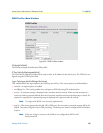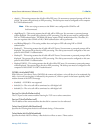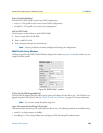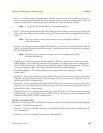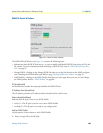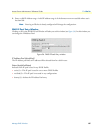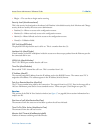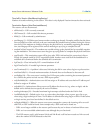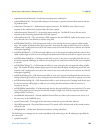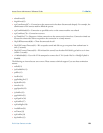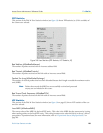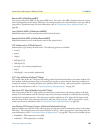
Dial In User Statistics window 89
Access Server Administrators’ Reference Guide 7 • Dial In
To view individual user statistics, select an active user in the
State
column on the Dial In main window (see
“Dial In main window” on page 55). For example, if you wanted to modify user jill, you would click on the
online(6)
link next to jill’s username.
Call Identification
This portion of the Dial In User Statistics window (see figure 37 on page 88) shows user information for a
unique user ID.
Call ID: (diactIndex)
Unique identification of this active call (for internal use).
State (diactState)
Indicates current progress of the selected call.
• Ringing—The call has been recognized by the access server and is in the process of going off hook
• Connecting—The access server has assigned a DSP to the incoming call and is now in the process of nego-
tiating the type of modulation (V.34, V.32, ISDN, or 56K).
• LcpNegotiate—The link is negotiating LCP parameters.
• Authenticating—The access server is in the process of verifying the user’s password by using static or
RADIUS authentication.
• Online—The access server has completed authentication and the user is now able to access the Internet.
• 12tpTunneled—Subsequent multilink call that was answered by another access server and tunneled to the
access server that has the originating call.
• Kill—The administrator can manually disconnect the user by activating this parameter.
• Dead—The user’s call has been disconnected. This message disappears when the linger time expires.
• Bury—The call has been killed and removed from the dial-in main window.
Username (diactUsername)
The caller’s username.
Password (diactPassword)
The caller’s password.
Shared Unique ID (diactMultiIndex)
Used for multi-link PPP, this is the unique identification shared between multi-link active calls.
Protocol (diactProtocol)
Indicates the type of service or link being provided for this call.
• PPP—The user has a PPP link running.
• Slip—The user has a Slip link running
• Telnet—The user has a telnet session running



